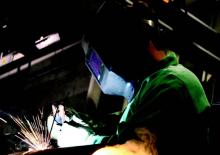Fluid Performance
From wind turbines to motorcycles, Virginia-based Afton Chemical Corporation produces fuel and lubricant additives to increase performance and efficiency such as fuel economy. To stay on the cutting edge of fluid performance as well as industry standards, Afton’s scientists have to create new additives and formulations.







